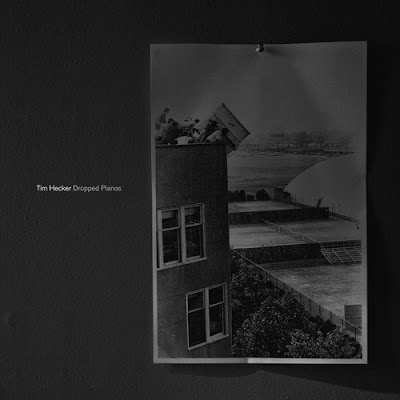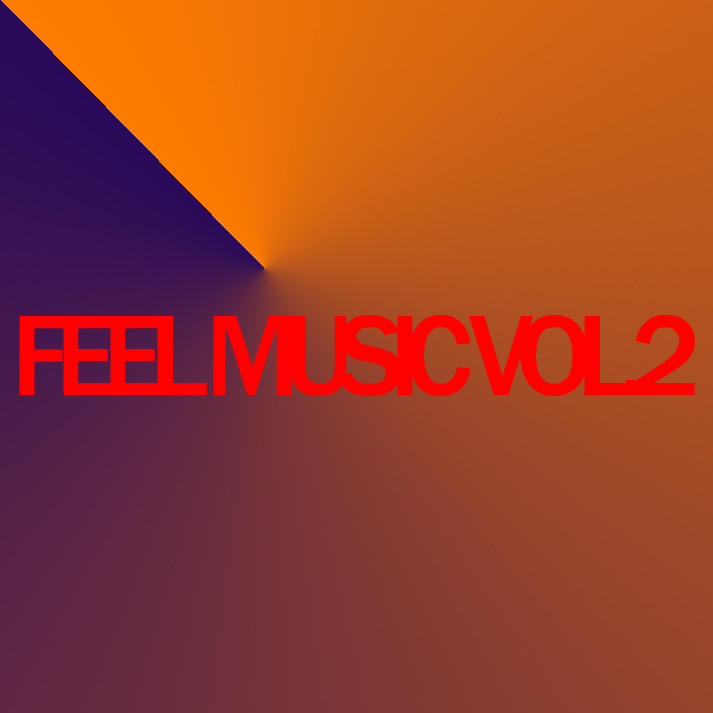Once again I'm doing this list as a "best music" one, meaning songs, singles, EPs, and LPs will all be included in indiscriminate fashion. I'm trying to keep things lean this time with an even 30 selections to be spread over 3 posts (compiled as one here on GB). All entry titles are hyperlinked to YouTube videos featuring correlating songs. I'll do some writing for the top 10, which hopefully won't delay the post too severely (update: it's there).
20. Panda Bear - Slow Motion

19. Escort - Escort LP

18. Chrissy Murderbot feat DJ Spinn- Bussin' Down

17. Surkin - Ultra Light

16, Salva - Complex Housing LP

15. Burial - Street Halo EP

14. Blue Daisy - The Sunday Gift LP

13. Silkie - It's Late

12. Shine 2009 - Realism LP

11. Jamie Woon - Shoulda

10. Africa HiTech - Out In The Streets VIP

This year I learned that VIP can stand for "variation in production." This is mainly used in drum n' bass circles when a producer remixes his/her own track drawing mostly the original components. "Out In The Streets" isn't the first time I came across this, but it was the first time when a VIP blew me away to such a degree that I had to uncover more about what's going on behind it. Africa HiTech's self-titled debut LP is solid all the way through, but "Out In The Streets" is the footwork-y standout. The VIP takes that flurry of skittery snares and cymbals and straps them to a dnb rocket. AHT's post-LP single asked "Do You Really Wanna Fight?" in a way that talked down aggressors by puffing their chests. "Out In The Streets VIP" shows that they were serious when they coyly asked that.
9. The Field - Looping State of Mind LP

I've gushed so much in the past about how great Axel Willner is at what he does, that I honestly don't have all that much more to say. When I first listened to Looping State of Mind I simply thought of it as more music from The Field, and I'm perfectly happy to have it. That said, LSoM doesn't hit the pleasure centers quite as hard as some of the producer's previous long players, opting for a more sustained bliss than the hills and valleys of his more dramatic pieces. The Field has produced a more balanced album as a result, which I imagine has to be part of the reason I've seen it showing up on other people's lists who I've never known to be Field fans. If broader appeal(?) means Willner can continue on with his practice though, I eagerly await the next dose.
8. Zomby - Dedication LP

Zomby is one of the most difficult producers to pin down in a genre. He has tropes that recur here and there (8-bit blips, gunshots, airhorns), but to say that this collection actually defines what Zomby sounds like is a gross over simplification. On Dedication we're turned in yet another new direction, and this one's pretty dark (see song titles in the album art). It's hard to listen to Dedication and not feel a sense of lurking. Ghostly synths haunt some tracks juxtaposed with poppy hi-hats that make me sense one sound is hunting the other. Dedication is music of contained unrest, possessing the ability to remain calm in the face of pure terror. Playing this while driving at night out in a rural area might be the ideal way to listen to it, but I don't think I have the constitution for that sort of thing.
7. Cut Copy - Zonoscope LP

2011 was more of an "album year" than one of singles for me, and I think that changeover is easily paralleled with the way I listened to Cut Copy's latest. The reason I never clocked a multitude of replays with In Ghost Colours had most to do with the fantastic remixes that were being released of that album's singles, which were more attractive to me at the time. Now in 2011, I still DJ, but it's not the primary reason I'm seeking out Cut Copy tracks. I think the singles simply got stuck in my head and I found myself cycling choruses in my mind, which drew me into Zonoscope enough to realize that every song on it had an infectious hook somewhere. I may still seek out remixes that have risen to the top, but I feel like my heart has already staked its loyalty with the originals.
6. James Blake - Limit To Your Love

Reactions to James Blake's reintroduction to the world as a pretty boy, piano bar crooner have been incredibly varied depending on which circle you travel in. With this emergence, Blake was suddenly on the big, Pitchfork-christened indie music circuit which many latched on to, some of whom would then turn around in traditional, popular backlash form. I liked James Blake as an underground UK "dubstep" producer, and was really more shocked than anything else when his first true vocal outing, "Limit to your Love" was shared around the Internet. Perhaps even more surprising to me, was that this Feist cover was the best thing Blake had yet produced. There's a variety of great elements to dissect here, but none more impactful than James Blake's use of silence. When all of the sounds drop out, that silence perfectly encapsulates the depression of being left behind, only to have those old hopeful feelings rush back again when those familiar piano chords signal the music's return.
5. Pictureplane - Thee Physical LP

I wish I had it in me to attempt to create music the way Travis Egedy of Pictureplane does, but I feel like only some bizarro world version of myself would actually be of a mindset of produce and perform this kind of stuff. Egedy's meditations on the ways human relationships evolve amidst oceans of technological advancements are messy in the best way possible. The sampling techniques employed here are very DIY, laying out repetitions that are pretty raw in a way that nicely reflects on the digital production process. The samples themselves are pitchshifted diva calls, paired with sped-up and slowed-down trance synths, a nice correlation to the current US pop landscape which itself is basically a form of trance music. Egedy's breathy vocals are the cherry on top, rounding out Thee Physical as a concept album that absolutely delivers on its core ideas without sacrificing any of its hooky madness.
4. The Rapture - How Deep Is Your Love?

Great singles can sometimes serve as enthusiastic hype-men for upcoming albums. A couple years ago when M83 put "Couleurs" on the band's website prior to Saturdays=Youth, I was ready to preemptively grant it "album of the year" status. Though my expectations were a bit more reserved for The Rapture due to their extended hiatus and member shake-up, "How Deep Is Your Love?" had me as juiced to see what else the band had in store as I could have hoped. After repeat listens, In The Grace Of Your Love may be kind of a mixed bag, but that lead single still shines brighter than perhaps any other individual song released in 2011. Almost all of The Rapture's best traits are on exhibit with this one: Luke Jenner yelping at top-range, infectious piano-stabs, music-centric chanting ("Let me hear that song!"), and a saxophone breakdown. The band may have shed their punk-infused adolescence, but they've kept their ability to make a track that is equal parts charged rock song and heart-wrenching dance cut.
3. Andy Stott - Passed Me By / We Stay Together LP

Andy Stott's 2011 output feels like it was made just for when I'm in a "music-listening" mood. The compiled EPs isolationist aesthetics are perfectly suited to the earbud-donning lifestyle. It's amazing how cold and distant the music comes off despite all the vinyl scratch and static fuzz on display here, which normally lend a homespun warmth the the proceedings. Stott slows his tempos down to gurgling chugs that sound as if the inertia continues to fight back. The beats hit like implosions, gasping for air instead of rippling out across the dancefloor. The same way The Field floored me with their debut by producing sample-based techno music that sounded like nothing else, Andy Stott has done likewise here with Passed Me By / We Stay Together, a combination of the two EPs released separately this year, along with a couple very worthy bonus tracks. I'd like to convince more people to give this stuff a spin (that's why I include the YouTube links), but I also know this is the type of music that's already in my wheelhouse and probably in few others.
2. M83 - Hurry Up, We're Dreaming LP

Another year, another M83 album in my top 2. Anthony Gonzales was heavily influenced by the stadium-filling rock bands he was touring with as he conceptualized this double LP. I totally understand where this is coming from in terms of his bold vocal performance on Hurry Up, We're Dreaming, but everything else about the album reads as studio wizardry, not live performance improvisation. "Wizardry" is actually an understatement as the diversity of instruments and styles M83 pulls together here is masterful. Woodwinds, strings, guest vocalists and more are culled together to form a truly bombastic soundstage. Gonzales hasn't forsaken the signatures of his past work either, giving shoegaze, 80s synth-pop, and cinematic dreamscapes equal footing. Hurry Up, We're Dreaming basically has everything an M83 fan would have already wanted, plus Gonzales showing off his pipes like never before. This album showcases just how great a work of art can be when an artist bares their soul to craft it. M83's latest is a testament to dreaming big and following through on that vision to the fullest.
1. Gang Gang Dance - Eye Contact LP

In interviews, members of Gang Gang Dance have spoken of this year's album as being a moment of clarity for them. Signs of this are apparent even before listening to Eye Contact, from the song titles ("Glass Jar," "Thru and Thru") and sharp cover art. In comparison to their previous LP, the experimental Saint Dymphna, Eye Contact definitely has a direct focus; a successful melding of bizarre vocal stylings, pan-global tribal influences, and modern electronic instrumentation. Perhaps it goes without saying that everything works well together (there are even designated interludes), but the real reason this album is so good is that every song is fantastic in a totally different way than the last. Leaving things here, the decision about whether to put this or M83 on top might as well been a toss-up. The scales tipped in GGD's favor primarily based on the incredible strength of the 11-minute epic, lead-off track "Glass Jar." The first half of the track is all build-up; constantly evolving and reshaping, but always growing. It would be all for naught if the payoff weren't so huge when the drums finally kick in, but GGD delvers on this too, offering up a psychedelic whirlwind of synths, beats, and voices that a lesser band would have had to divide amongst three or more pieces. If GGD has one core strength, it's their ability to draw from influences that have very concrete connotations, and redefine what you think of them. "Glass Jar" and the whole of Eye Contact performing this feat would be impressive enough, but to do so under the "guise" of clarity shows they trust their listeners to trust them back, which I certainly did.













































Log in to comment